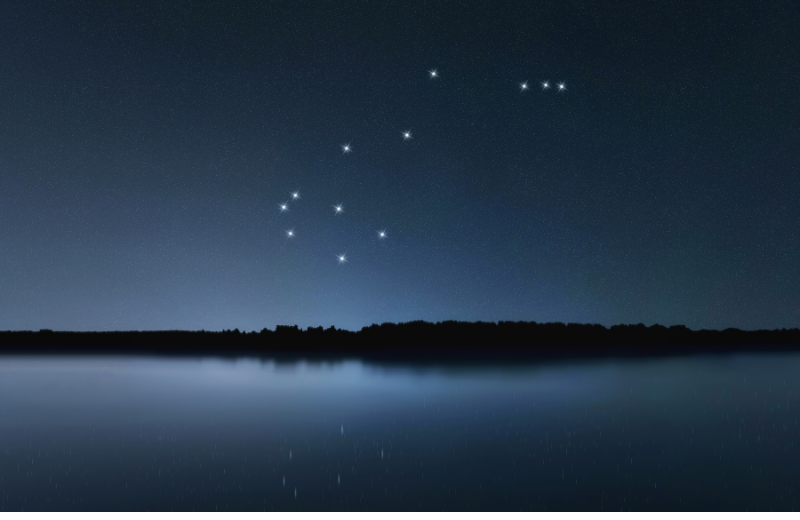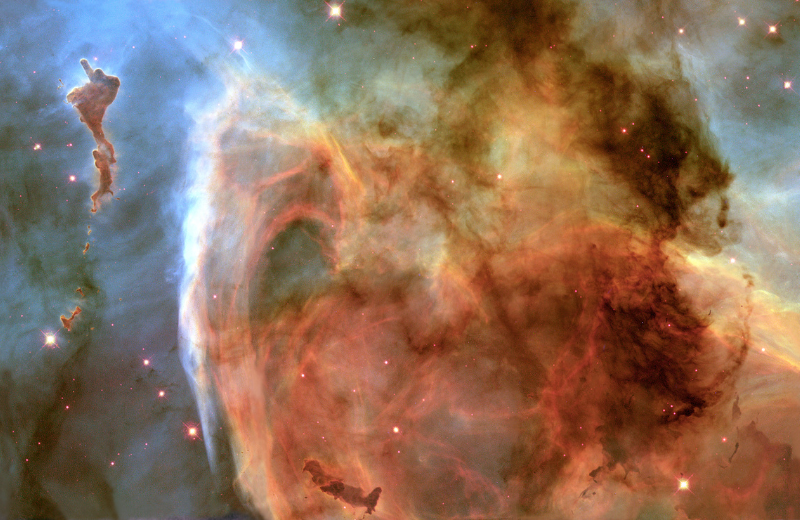If you're curious about the wonders of the night sky, you've likely come across the Carina constellation. But what exactly is Carina, and why is it so fascinating? This guide will take you on a journey through the constellation, exploring its stars, nebulae, and the myths that surround it.
Jump to:
Recommended for you!
Best SellersWhat is the Carina Constellation?
Carina is a constellation in the southern hemisphere, named after the keel of a ship. In ancient times, it was part of a larger constellation called Argo Navis, which represented the ship used by Jason and the Argonauts in Greek mythology. Carina was later separated into its own constellation and is now one of the 88 modern constellations recognised by astronomers.
Carina is best known for containing some of the brightest stars and most spectacular nebulae in the sky, making it a popular target for astronomers. But there's more to Carina than just its bright stars—its history, mythology, and deep sky objects add layers of intrigue to this beautiful part of the sky.
What Does Carina Look Like?

Carina is a large and prominent constellation. Its shape resembles the keel of a ship, with a pattern of stars that form a distinctive 'V' shape. This makes it relatively easy to spot if you're in the right location and know what to look for.
The constellation is home to a number of bright stars, with the most famous being Canopus, the second-brightest star in the night sky. However, Canopus isn't the only star worth noting in Carina—there are several others that contribute to its brilliance and make it a fascinating area to observe.
The Carina Constellation Myth
The Carina constellation is steeped in mythology, particularly connected to the story of Jason and the Argonauts. In Greek mythology, Carina was part of Argo Navis, the ship that carried Jason and his crew on their quest to find the Golden Fleece. The ship was eventually divided into three smaller constellations: Carina (the keel), Vela (the sails), and Puppis (the stern).
This mythological connection gives Carina a rich cultural significance, linking the stars in the sky to the stories and legends of ancient Greece. The image of a ship sailing across the heavens is a powerful one, and it adds a layer of depth to the experience of stargazing in this region of the sky.
What is the Meaning of the Carina Constellation?

The name "Carina" comes from the Latin word for "keel," which is the structural backbone of a ship. This name reflects the constellation's shape and its historical association with Argo Navis, the ship of Jason and the Argonauts. The meaning of Carina, then, is closely tied to themes of exploration, adventure, and navigation—concepts that resonate with the idea of looking up at the stars to find your way.
How to Pronounce Carina
Carina is pronounced "kah-RYE-nuh." Emphasising the second syllable helps ensure you're saying it correctly.
Carina's Stars
The Carina constellation is home to several notable stars, each with its own unique characteristics. Here are some of the most important ones:
Canopus
Canopus is the brightest star in the Carina constellation and the second-brightest star in the night sky, after Sirius. It's a giant star, much larger and brighter than our Sun, and is located about 310 light-years from Earth. Canopus has been used throughout history for navigation, particularly in the southern hemisphere, where it's a prominent marker in the sky.
Eta Carinae
Another fascinating star in Carina is Eta Carinae, a massive and highly luminous star system that's well known for its dramatic past. Eta Carinae is a binary star system, meaning it consists of two stars orbiting each other. What makes Eta Carinae particularly interesting is the "Great Eruption" that occurred in the 19th century, when the star suddenly brightened and became the second-brightest star in the sky for a time.
Although Eta Carinae is much fainter now, it remains one of the most studied stars due to its potential to eventually explode as a supernova. The system is surrounded by a cloud of gas and dust known as the Homunculus Nebula, which was ejected during the Great Eruption.
Other Notable Stars
Carina also contains several other stars of interest, including Miaplacidus and Avior, both of which are bright and easily visible to the naked eye. These stars add to the overall brilliance of the Carina constellation and make it a rewarding target for stargazing.
Nebulae in the Carina Constellation

Carina is home to some of the most spectacular nebulae in the sky. Nebulae are vast clouds of gas and dust where new stars are born, and the Carina constellation boasts one of the most famous of them all.
The Carina Nebula
The Carina Nebula, also known as the Eta Carinae Nebula, is one of the largest and brightest nebulae in the sky. It's a vast region of star formation, located about 7,500 light-years from Earth. The Carina Nebula is so large that it can be seen with the naked eye from dark sky locations, and it offers stunning views through telescopes of all sizes.
One of the most famous features of the Carina Nebula is the "Finger of God," a large pillar of gas and dust shaped by the intense radiation from nearby stars. This region is a favourite among astronomers and astrophotographers due to its striking appearance and the wealth of scientific information it offers.
Other Deep Sky Objects
In addition to the Carina Nebula, the constellation contains several other deep sky objects, including the Southern Pleiades (a beautiful open star cluster) and the Wishing Well Cluster, which also contains many young, bright stars. These objects make Carina a rich area of the sky to explore, whether you're using a telescope or just observing with the naked eye.
Finding Carina in the Sky
To find Carina in the night sky, your starting point is Canopus, the brightest star in the constellation and the second-brightest star in the entire night sky. Canopus is relatively easy to spot if you’re in the southern hemisphere and away from city lights.
Once you’ve located Canopus, you can begin tracing the rest of the Carina constellation. Carina’s stars form a distinctive 'V' shape, representing the keel of a ship. From Canopus, look for Miaplacidus, another bright star in the constellation, which forms part of the 'V' along with a few other stars. With a bit of practice, you’ll be able to trace out the entire constellation and spot some of the other stars and nebulae that make Carina so special.
Viewing Carina with Binoculars or a Telescope
While many of the stars in Carina, including Canopus, are visible to the naked eye, using binoculars or a telescope can greatly enhance your viewing experience, allowing you to explore more of the constellation’s details and deep sky objects.
- With Binoculars: Binoculars can help you see the fainter stars that form the Carina constellation and give you a clearer view of its structure. This is particularly useful for spotting stars that are part of the constellation but are not as bright as Canopus or Miaplacidus.
- With a Telescope: A telescope can reveal even more of Carina’s beauty, including the famous Eta Carinae star system and the Carina Nebula. The Carina Nebula, in particular, is a breathtaking sight through a telescope, showing intricate details of the gas and dust clouds where new stars are forming.
Special Features to Observe
Carina is rich with astronomical features that make it a rewarding constellation to explore:
- Eta Carinae: One of the most massive and luminous star systems known, Eta Carinae is a fascinating object to observe, especially because of its potential to explode as a supernova in the future.
- The Carina Nebula: This nebula is one of the largest and brightest in the sky, offering spectacular views of star formation regions and the famous "Finger of God" structure.
- Southern Pleiades: An open star cluster within Carina, which can be observed with binoculars or a telescope, offering a view of young, bright stars.
The Best Viewing Times
Carina is best viewed during the southern hemisphere's summer months, particularly from late February to March, when the constellation is high in the sky. For the best experience, find a dark location away from city lights, and allow your eyes to adjust to the darkness. This will help you see the full beauty of the Carina constellation, including its fainter stars and deep sky objects.
Recommended for you!
Best SellersFun Facts About Carina
Carina is a constellation full of interesting facts and trivia that can make your stargazing experience even more enjoyable. Here are a few fun facts about Carina:
- Not the Brightest Star: Although Carina contains some very bright stars, it's not home to the brightest star in the sky—that title goes to Sirius in the Canis Major constellation.
- Carina in Astrology: While Carina isn't one of the zodiac constellations, its stars, especially Canopus, have been associated with guidance and protection in various cultures.
- The Great Eruption: The "Great Eruption" of Eta Carinae in the 19th century was so bright that it was visible during the day, and it puzzled astronomers for years.
- Mythical Ship: Carina, as part of the Argo Navis, is linked to one of the greatest adventures in Greek mythology—Jason's quest for the Golden Fleece.
- The Name Carina: The word "Carina" means "keel" in Latin, which is the part of a ship that helps it stay upright and steer straight, symbolising stability and direction.
Study Astronomy for £29
If you’re fascinated by the stars and want to learn more about the universe, consider enrolling in our Astronomy Diploma Course at Centre of Excellence. You’ll gain a detailed understanding of the stars, planets, and celestial phenomena, all from the comfort of your own home. Sign up today for a discounted price of £29 and start your journey into the cosmos!












